El Molinón
| Capacity | 42 650 |
|---|---|
| Country | Spain |
| City | Gijón |
| Clubs | Sporting de Gijón |
| Category | Design outdated |
| Cost | €150 M ($161 M) |
| Construction | ?–2029 |
| Design | Sordo Madaleno |
Advertisement
El Molinón – design description
What does El Molinón look like?
The first mention of El Molinón dates back to 1908, and as a result it is considered the oldest football stadium in Spain. The facility was also the first in Spain to receive full roofing of the stands (1969), and the first from which a Segunda División match was televised (1970).
The stadium is home of the football club Sporting de Gijón. The team has never been relegated below the level of the Segunda División, although it has never won a major trophy either. The venue hosted three matches of the 1982 World Cup, games of the Spanish national team, and the 1920 Copa del Rey final.
The stadium has been rebuilt many times. The changes were often carried out chaotically, and a major drawback over the years was the lack of a unified look and cohesion between the stands. However, this situation has improved considerably after the latest modernization (2009–2011). The stadium's capacity is about 30,000 spectators.
When were the first plans to redevelop El Molinón conceived?
In June 2022, Mexico's Orlegi Group purchased a 73% stake in Sporting de Gijón. The new owners were committed to the idea of including Gijón in Spain and Portugal's candidacy to host the 2030 World Cup, and the city was included in a list of 15 preselected Spanish candidates, which was announced on July 14, 2022.
Despite being included in the preliminary list, El Molinón did not meet FIFA's capacity requirements for World Cup matches (minimum 40,000 spectators).
Orlegi Group has prepared a concept for a new stadium that would stand right next to and replace the old El Molinón. The renderings were published in October 2022 in La Nueva España. The stadium was expected to cost €300 million to build. In the course of further consultations with the city, however, those plans were dropped due to a desire to preserve the historic El Molinón.
When was the new concept for the redevelopment of El Molinón presented?
On October 11, 2023, FIFA officially announced the choice of hosts for the 2030 World Cup, with Spain and Portugal winning the bid, expanded to include Morocco, as well as Uruguay, Argentina and Paraguay (the latter three countries will host one game each at the start of the tournament).
After the announcement of the tournament hosts, the competition between the 15 Spanish cities previously on the preliminary list gathered pace, as in the end it will most likely be reduced to 10 or 11 (the final selection of stadiums is expected in the summer of 2024).
The fight for the World Cup was not going to let up in Gijón either. On February 10, 2024, there was a presentation of a new project that included the reconstruction of El Molinón stadium. The author of the concept, created at Sporting's initiative, is Mexican studio Sordo Madaleno. The cost of the project was estimated at €150 million, and the reconstruction would be completed by 2029.
What does the El Molinón redevelopment concept entail?
The project calls for the reconstruction of the stands including the construction of a completely new west stand, as well as the addition of nearly 6,000 seats to the stands behind the goals. A temporary third level is also to be built, which will increase the arena's capacity by 9,000 seats (to 42,650 spectators) for the World Cup. After the championship, the additional floor is to be dismantled, leaving 33,650 seats for Sporting's matches.
The stadium's exterior will also undergo a significant metamorphosis. The project calls for the abandonment of the classic façade, and the stands will instead be girded by 10 wide ramps, through which spectators will move to their seats. The ramps will also serve as hanging gardens. Visually, the ubiquitous red will be striking.
The long ramps winding around the arena are a metaphorical extension of the kilometer-long loop for runners (the so-called "Kilometrín"), which is located in a nearby park, stretching from the beach to the stadium.
The stands will be covered by a brand-new expansive roof, supported by circular pillars placed all around. In its northwestern part will be an observation deck. Situated at a height of 30 meters, it is expected to offer excellent views of the city and San Lorenzo beach.
With the reconstruction, the stadium's appearance will be unified, its capacity will be increased, and spectator comfort as well as commercial opportunities will be enhanced.
Will the redevelopment of El Molinón be realized?
The El Molinón redevelopment project was conceived mainly with the 2030 World Cup in mind. It was a club initiative and its realization depended on the support of local authorities, whose commitment, however, was not strong enough to guarantee that the ambitious vision would become a reality.
Even before the final list of stadiums was announced, Sporting de Gijón issued a statement on June 11, 2024, indicating that it had been informed by the Spanish football federation that El Molinón would not be on the list.
El Molinón was indeed not included in the final list of host cities for the 2030 World Cup, and city officials announced that the stadium would be renovated in a somewhat different, more modest form.
Advertisement
Renderings
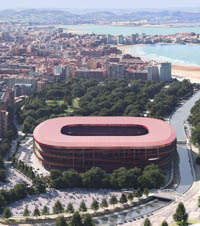
2024 © Sordo Madaleno 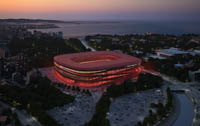
2024 © Sordo Madaleno 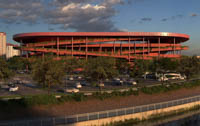
2024 © Sordo Madaleno 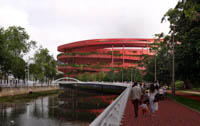
2024 © Sordo Madaleno 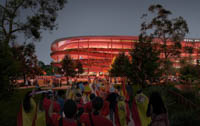
2024 © Sordo Madaleno 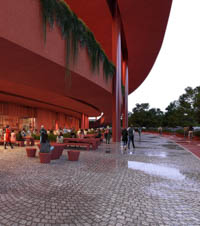
2024 © Sordo Madaleno 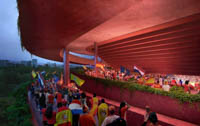
2024 © Sordo Madaleno 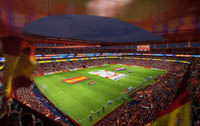
2024 © Sordo Madaleno 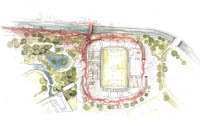
2024 © Sordo Madaleno 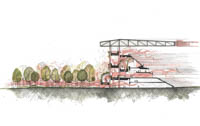
2024 © Sordo Madaleno 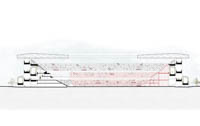
2024 © Sordo Madaleno 
2024 © Sordo Madaleno

 StadiumDB
StadiumDB